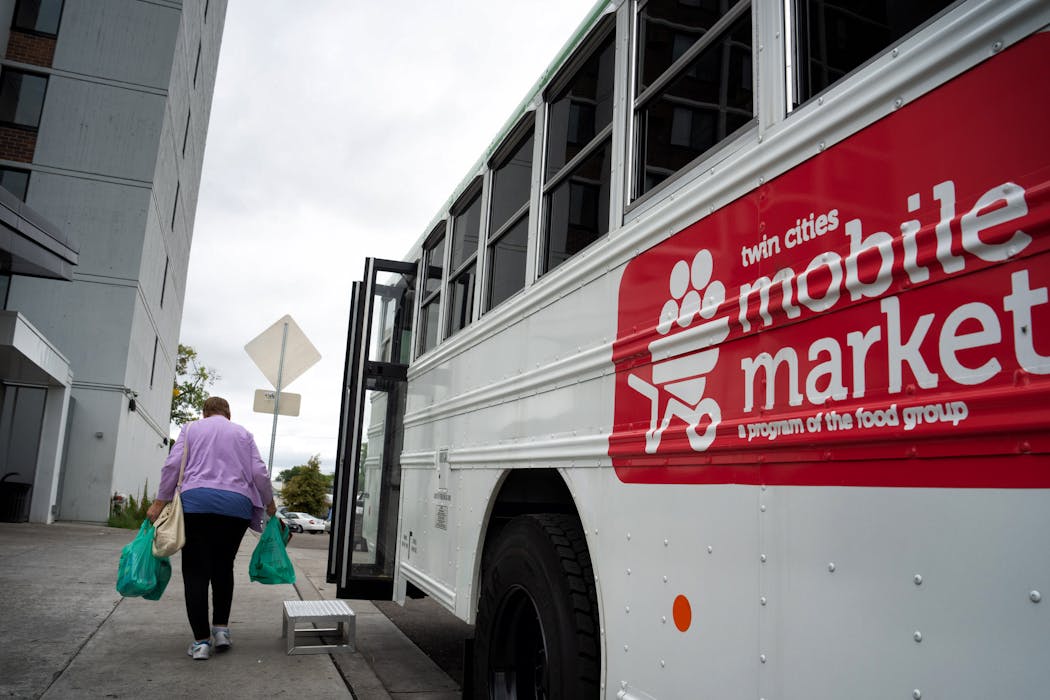Bonnie Haugen, a dairy farmer in rural Fillmore County in the southeastern corner of Minnesota, watches her mailbox each month for a check from the federal government.
In normal years, her Dairy Margin Coverage insurance program check — a U.S. Department of Agriculture program to buffer dairy producers from the viciousness of commodity cycles — might be close to zero.
But throughout the milking season of 2023, with dairy prices stuck in the basement, Haugen said that assistance has helped her operation avoid major losses.
"It's averaged about $9,000 a month," Haugen said Tuesday.
But she might not see a check come October — at least not right away, if the federal government shuts down.
"There's going to be nobody in the [local Farm Service Agency] office to do that paperwork," Haugen said.
With the nation on the brink of a federal government shutdown Oct. 1, the potential pain for Americans across the country is coming into sharper focus.
On Monday during a White House press briefing, Agriculture Secretary Tom Vilsack warned that a shutdown would reach into virtually every county. It would close local USDA offices, halt government-backed home loans to rural Americans and even further beleaguer efforts to reauthorize the federal farm bill, as tens of thousands of staff members, including some who give technical assistance on proposed legislation, will be furloughed.
"Phone's not going to get answered because there's no one there," said Vilsack. "Why aren't they there? Because we're in a shutdown. That's why it's so ridiculous for us to talk about this."
Few federal agencies exemplify the sheer breadth of public services that could be affected under a shutdown as the USDA, which also administers critical nutrition assistance and hires staff to inspect slaughterhouses.
While food stamps, also called the Supplemental Nutrition Assistance Program (SNAP), will continue at least through October, Vilsack said that a smaller program tailored for mothers and babies — the Women, Infants & Children (WIC) program — has enough funds for only one or two days in most states.
"If we have a shutdown, WIC shuts down," said Vilsack. "And that means nutrition assistance to those moms and children shuts down."
On Wednesday, the Minnesota Department of Health said WIC in Minnesota can continue to operate for two to three weeks, using federal funding already allocated to the state. On average, about 100,000 low-income pregnant and breastfeeding women, babies and children 5 years old and younger in the state received WIC assistance to buy healthy foods last year, according to the department.
Without that extra aid, those young mothers and children will likely turn to Minnesota's 350 food shelves, which have already been inundated by record numbers of visitors.
"A shutdown absolutely hurts the most vulnerable in Minnesota," said Sophia Lenarz-Coy, the executive director of the Food Group in New Hope, one of the seven food banks in Minnesota that provide food to food shelves. "It will just mean incredible strain on a system that's already at capacity."
Rising hunger
The number of food shelf visits this year could shatter last year's record, already up 29% through July compared with the same period last year, according to Hunger Solutions Minnesota. More Minnesotans are also relying on food stamps, with 442,000 recipients last month — 60,000 more Minnesotans than in August 2019.
"It may seem counterintuitive given the economic recovery, but the recovery has been uneven," said Zach Rodvold of Second Harvest Heartland in Brooklyn Park, the state's largest food bank. " [The shutdown] would take us from a hunger emergency to a crisis. A lot of the attention gets paid to the national parks shutting down and other services being disrupted, but for a lot of people, this could be the difference between food on the table and not."
The higher costs of living coupled with stagnant or fixed incomes is hampering low-income Minnesotans, especially after special support — from pandemic stimulus checks to eviction moratoriums — ended. Now, with the possible loss of WIC and SNAP aid and furloughs of federal workers, food programs are scrambling to prepare for an influx.
Second Harvest is looking to boost its food supply, buying more food instead of relying on donated food. In New Hope, the Food Group is expanding a mobile market to serve more mothers and children, and offering a discount to WIC recipients at pop-up grocery stores. In Minneapolis, NorthPoint Health & Wellness is bracing for increased food shelf visitors and questions from people enrolling in SNAP, applications that will be backlogged in a shutdown.
And in Columbia Heights, Southern Anoka Community Assistance (SACA) is serving more walk-in clients while preparing to move to a building three times bigger to meet the growing need.
"It's very frustrating. These people are hired to run the country," Dave Rudolph, SACA's co-executive director, said of Congress. "The best case scenario is they come to their senses."
In Minnesota, a boost in state funding to food shelves and the Legislature's approval of free school breakfasts and lunches will provide extra support to some families and organizations, but that state aid will now be offset by the effects of a federal shutdown.
"It won't go as far," said Colleen Moriarty, executive director of Hunger Solutions, which is asking food shelves to extend hours and donors to step up support. "Not having nutrition for pregnant moms, nursing moms and infants is a crucial issue. It doesn't get more basic than that."
Back in Fillmore County, Haugen notes that for many farmers across drought-ravaged Minnesota, the Farm Service Agency offices scattered in nearly every county offer assistance to beef producers who may have lost cattle in the heat and to herd managers, such as herself, who lost forage.
She has an early November appointment on the books for the FSA office in nearby Preston. But if Congress is unable to keep the government open, that important meeting to apply for assistance, too, will be delayed.
"Who knows when we will be able to apply?" said Haugen.


